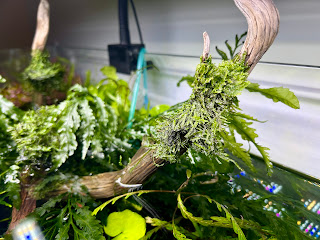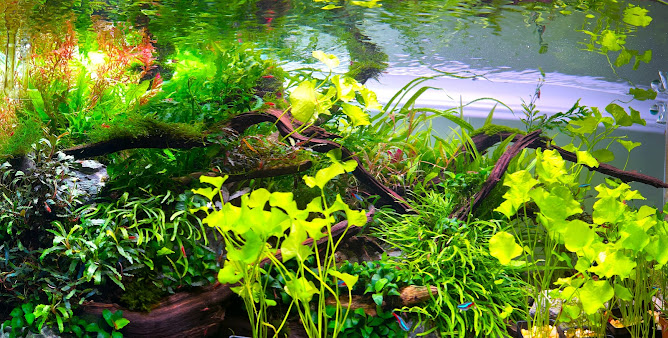How to Remineralize Soft Tap Water for a Healthy Aquarium
If you have soft tap water, remineralizing it to meet the specific needs of your fish and invertebrates is often the best path to a thriving aquarium. This article will provide you with a step-by-step guide to effectively and consistently mineralize your soft tap water to reach your target GH and KH levels, using readily available products and a reliable 'add and test' method.
Here's what you need to consider when mineralizing soft tap water:
First, determine the ideal GH and KH for your specific fish and invertebrates. This information is crucial. Don't just aim for a general "good" range; research the specific needs of your species. If your tap water is soft, remineralization is likely necessary to achieve the optimal GH and KH for your aquarium. However, some soft tap water may already contain a partial mineral balance. Always test your water parameters first to determine whether remineralization is needed.
Several commercially available remineralizing products can be used for this process. This article focuses on Salty Shrimp GH/KH+ due to its well-defined GH/KH ratio, but the ‘add and test’ method can be applied to any reputable remineralizer with a known mineral composition.
Salty Shrimp GH/KH+ formulation is a blend of carefully balanced minerals and trace elements specifically designed for freshwater aquariums and their inhabitants. These include essential minerals like calcium, magnesium, potassium, and sodium, which contribute to the general well-being of fish and promote optimal plant growth in planted tanks by providing necessary nutrients.
A key characteristic of this Salty Shrimp formulation is its specific GH and KH raising ratio of 1 °dH increase in GH to 0.5 °dH increase in KH. This means that for every 1 °dH your GH increases, your KH will increase by half a degree (0.5 °dH). Furthermore, the essential minerals that constitute GH, calcium and magnesium, are present in a beneficial 2 parts calcium to 1 part magnesium (or a Ca:Mg ratio of 2:1 by weight), considered good for invertebrates and fish. While this article focuses on Salty Shrimp GH/KH+ due to its well-defined GH/KH ratio and reliable performance, the 'add and test' method described can be adapted for use with other reputable aquarium remineralization products. Always ensure you understand the specific mineral composition and recommended dosage of any product you choose.
Other readily available products such as Seachem Equilibrium which is specifically designed to only raise GH levels in RO/DI water and typically has a minimal impact on Carbonate Hardness (KH). KH is desirable in a planted aquarium as the carbonates buffer the pH in the water, this is why Salty Shrimp has been chosen as a re-mineralizer.
Determining the amount of mineralizing powder to add to your tap water can be achieved in several ways, however a practical approach based on testing is most recommended. To provide a more informed starting point for your remineralization process, I have tested with Salty Shrimp GH/KH+ powder in a 100 litre holding tank to provide some guidance with regard to how much powder is required. The results are in the tables below are approximate.
Always use them as a starting point, not a definitive rule. The ‘add and test’ method remains the most reliable way to achieve precise and stable results for your specific water conditions.
Reference Tables for Salty Shrimp GH/KH+ powder dosing (Approximate)
Table 1: Initial Tap Water GH 1.27 °dH
Table 2: Initial Tap Water GH 3 °dH
The practical ‘add and test’ method ensures controlled remineralization of soft tap water. This example assumes a 100-liter food-grade container, with the goal of raising the GH to 6 °dH and the KH to 3 °dH.
Prepare the Water:
Treat your tap water with a reliable dechlorinator to remove chlorine, chloramine, and heavy metals. Allow sufficient time for the dechlorinator to work before proceeding.
Establish a Baseline Measurement:
Measure the GH of your tap water using a reliable test kit. Identify which reference table above best matches your tap water’s initial GH. For example, if your tap GH is close to 3 °dH, use Table 2 as a guideline.
Calculate an Initial Powder Amount:
Based on Table 2, a good starting estimate for raising GH from 3 °dH to 6 °dH is 5 grams of Salty Shrimp GH/KH+ remineralizing powder per 100 liters. However, this is an approximate guideline.
Add in Small Increments and Test Continuously:
Begin by adding half the estimated amount—2.5 grams—to the container. This prevents overshooting the target.
Mix thoroughly to dissolve the powder using a stirring utensil or small powerhead pump. Allow a few minutes for proper circulation.
Test the GH and KH to assess the impact of this initial addition.
Iterate with Small Powder Increments:
If GH remains below the target (e.g., still under 6 °dH), add small increments (0.5–1 gram at a time). Mix thoroughly and test GH again.
Repeat this process, adjusting in small steps to fine-tune the GH/KH without sudden changes.
If GH exceeds 6 °dH, you now know the upper threshold. Take note of the total amount used so you can slightly reduce it in future batches.
Finalize and Scale for Future Batches:
Once the exact grams per 100 liters are determined, note this amount for repeatable, consistent remineralization.
(Optional but recommended) Calculate the grams per liter ratio for easy scaling in smaller or larger batches. For example, if you used 5.3 grams per 100 liters, you would use 0.053 grams per liter for future preparations allowing you to prepare water in any size container with your tap water.
Conclusion: Once you have determined the correct remineralization dose for your tap water, apply the same process consistently for future water changes. Regular testing remains essential, as minor variations in tap water quality can affect GH/KH over time. By integrating remineralized water into your routine, you can maintain stable water parameters and ensure a healthy aquatic environment.

.jpg)

.jpg)
Comments